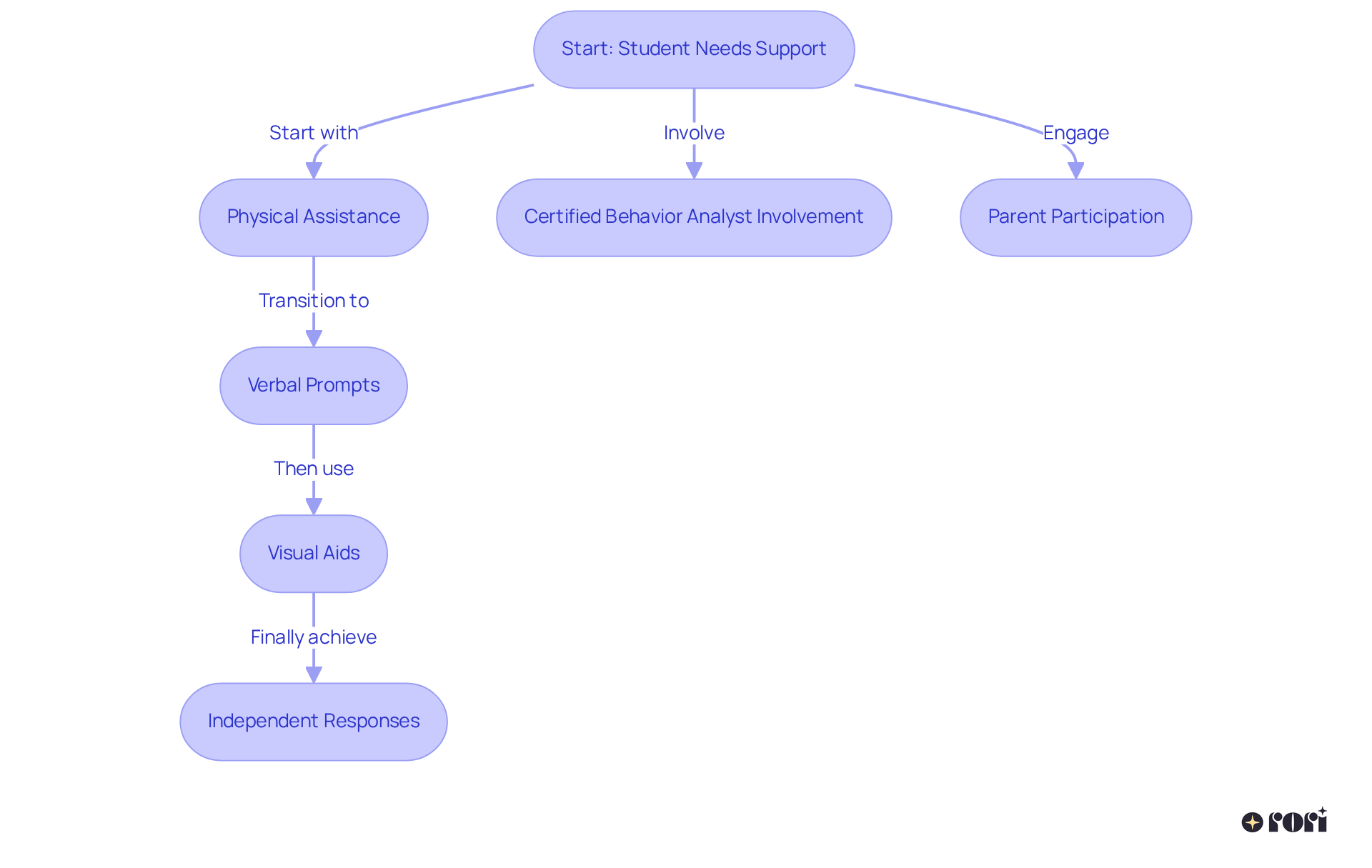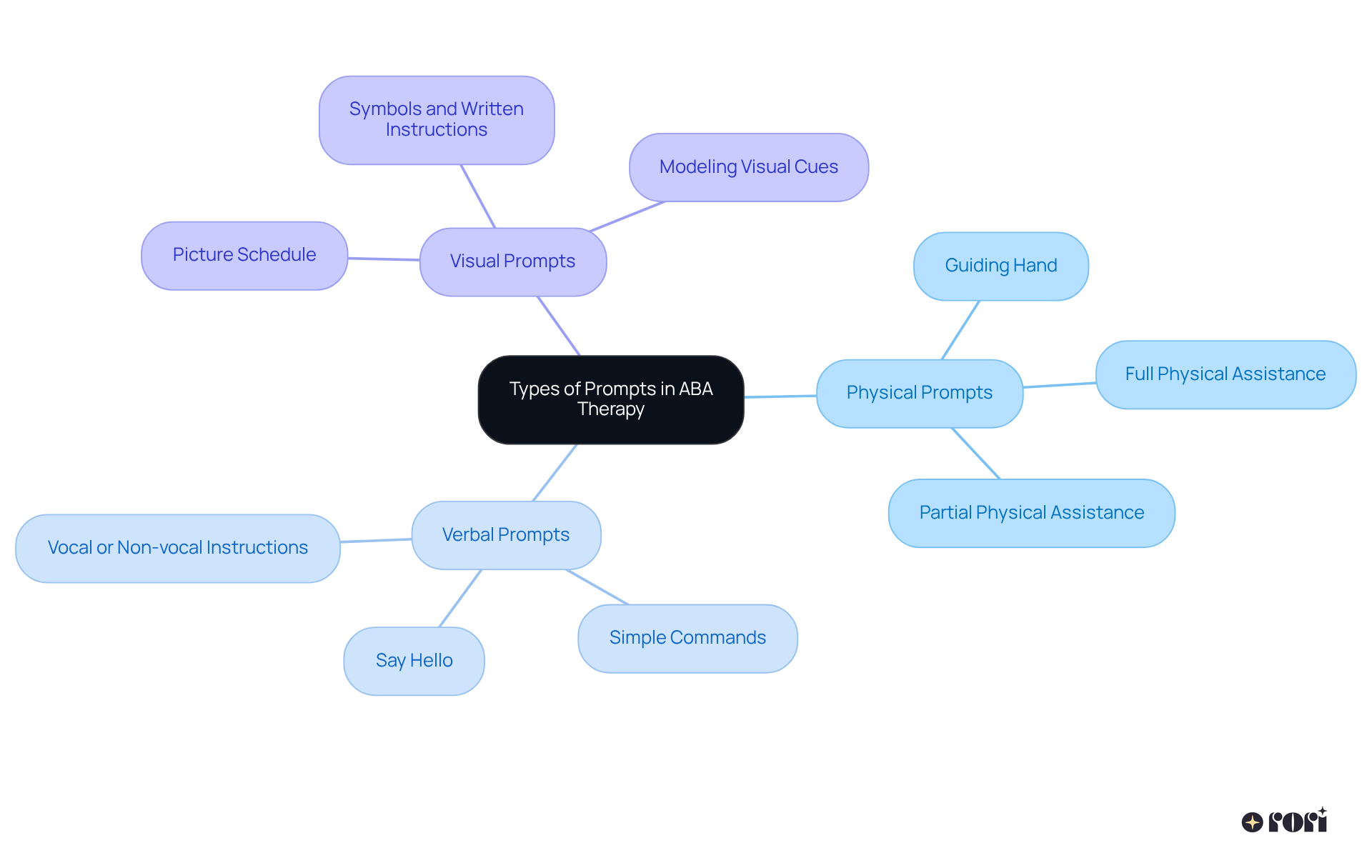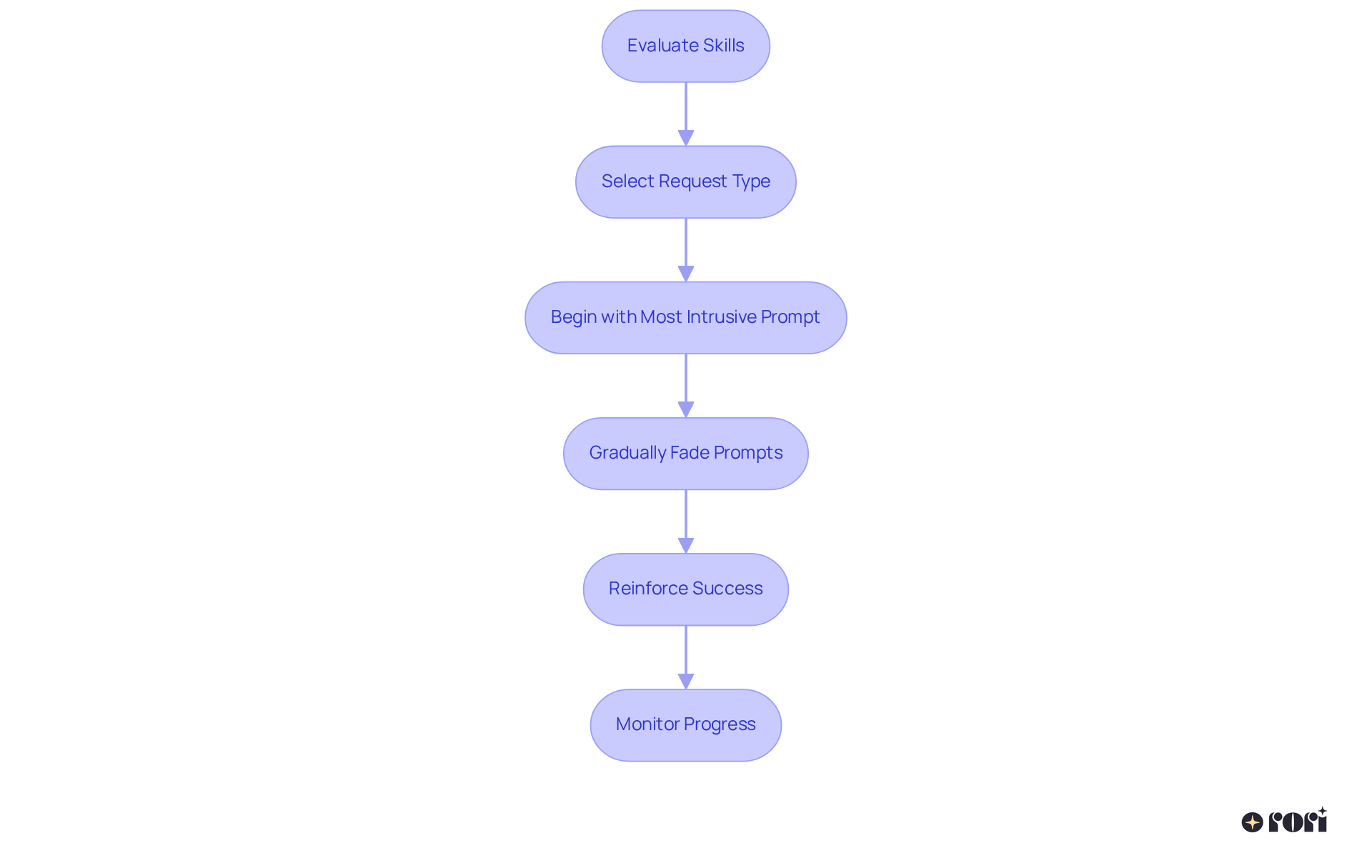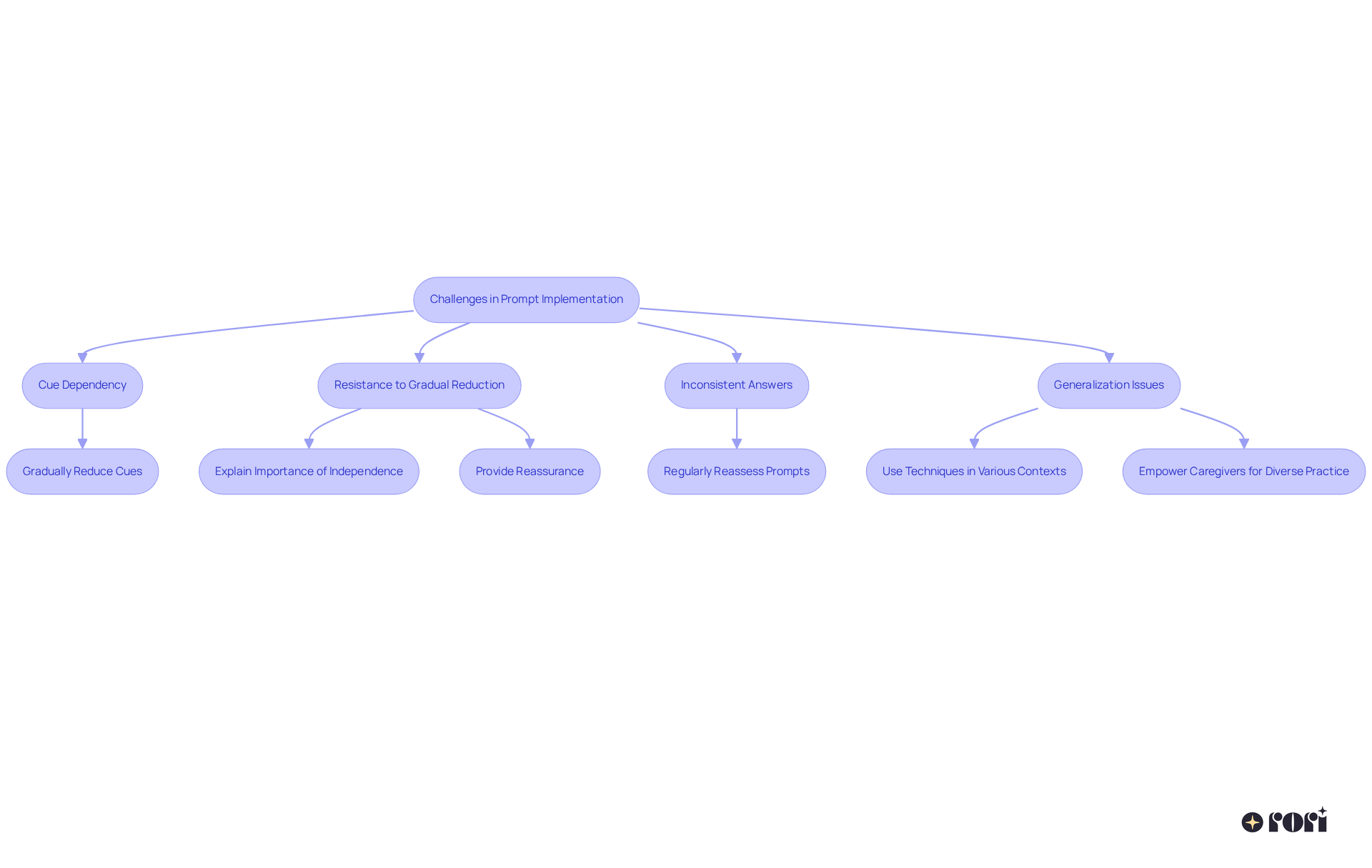This article dives into the essential role of mastering the hierarchy of prompts in Applied Behavior Analysis (ABA) therapy. It’s all about guiding our kiddos toward skill development and independence! 🌟 Gradually fading support is key here, using different types of prompts—like physical, verbal, and visual—tailored to each child's needs. Plus, involving caregivers makes a huge difference in enhancing learning outcomes and fostering autonomy.
Let’s explore this together! It’s important to remember that every child is unique, and finding the right balance of support can be a journey. By sharing experiences and strategies, we can help each other navigate this path. We’re here to help you every step of the way!
In the world of Applied Behavior Analysis (ABA) therapy, understanding the hierarchy of prompts is key to helping learners gain independence. This structured approach not only guides individuals through their learning journey but also empowers them to build essential skills with less reliance on support. But let’s be honest—navigating the ins and outs of prompt implementation can be tricky. It often leaves parents and caregivers wondering: how can we strike the right balance between providing support and encouraging autonomy for lasting behavioral change?
This guide is here to help! We’ll dive into the nuances of prompt hierarchy, sharing insights and strategies that can enhance the learning experience for children with autism. Let’s explore this together and find ways to make the journey smoother for everyone involved!
In Applied Behavior Analysis (ABA) therapy, the hierarchy of prompts aba acts as a helpful roadmap for students, guiding them in developing new skills or behaviors. This system works on the idea of gradually easing off support as the student gains confidence and skill, ultimately by reducing cues over time. It typically starts with more hands-on help, like physical assistance, and transitions to lighter support, such as verbal prompts or visual aids.
Recognizing the importance of this cue structure is crucial for effectively guiding students through their learning journey while helping them rely less on support. A well-organized approach not only boosts learning outcomes but also empowers children with autism to build essential skills more independently.
Certified behavior analysts play a key role in crafting tailored programs that include clear goals and research-backed methods, ensuring the steps are implemented effectively. Research shows that achieving a mastery level of 90% or higher in independent responses over two consecutive sessions is a strong indicator of success with cue structures.
Moreover, maintaining procedural integrity is vital to ensure that teaching methods are applied correctly, which greatly influences the effectiveness of interventions. Parent involvement is also a game-changer in ABA therapy programs. When parents actively participate, it often leads to better engagement and outcomes for their children. By understanding ABA principles and strategies, caregivers can make informed decisions that positively affect their child's progress.
Incorporating different prompting techniques, including the hierarchy of prompts aba, such as Most-to-Least (MTL) and Least-to-Most (LTM), can further enhance the skill acquisition process. This adaptability ensures that treatment plans are responsive to each child's unique needs. Let’s explore this together! We’re here to help you every step of the way!

In ABA therapy, the hierarchy of prompts consists of three primary types that play a crucial role in guiding learners toward desired behaviors. Each of these prompts benefits from a personalized approach, which is a key principle of Applied Behavior Analysis.
Understanding these types of prompts is vital for effectively implementing the hierarchy of support. This ensures learners receive the right amount of assistance tailored to their unique needs. Plus, the concept of fading support is important—it involves gradually reducing assistance to foster independence over time.
Current trends in ABA therapy emphasize the importance of these cues in enhancing learning and encouraging autonomy. This ultimately leads to better outcomes for children with autism. By empowering caregivers with ABA principles and strategies, they can actively engage in their child's development, enhancing support and informed decision-making.
And let’s not forget about the automatic data collection during sessions! This allows for continuous tracking of progress, ensuring that interventions remain effective and responsive to the child’s evolving needs. Qualified behavior analysts are essential in designing individualized plans, making sure each child’s unique requirements are met.
So, let’s explore this together! We’re here to help you every step of the way!

To implement the prompt hierarchy effectively, let’s follow these friendly steps together:
By following these steps, you can effectively apply this structured approach within the hierarchy of prompts aba, nurturing skill development and autonomy in your learners. Studies even show that children can see improvements of up to 30% when personalized prompting strategies are used. This highlights just how important a can be. Let’s explore this together!

Implementing the hierarchy of prompts aba in ABA therapy can bring about a few challenges that practitioners and parents need to navigate together. 😊
First up, we have cue dependency. Sometimes, learners become overly reliant on cues, which can make it tough for them to respond on their own. To tackle this, it’s important to gradually reduce those cues while encouraging independent responses. This approach not only fosters autonomy but also enhances skill development, paving the way for long-term independence. Knowledgeable caregivers can play a vital role here by recognizing the importance of this gradual fading and actively participating in their child's learning journey.
Next, let’s talk about resistance to gradual reduction. It’s not uncommon for some individuals to resist fading cues, often due to anxiety or a desire for control. In these cases, practitioners should involve the student by explaining why independence matters and providing reassurance throughout the transition. This collaborative effort can help ease anxiety and foster a sense of ownership over their learning. Caregivers can reinforce these ideas at home, ensuring everyone is on the same page.
Now, inconsistent answers can also pop up. If a student’s responses vary a lot, it might indicate that the current question structure doesn’t match their ability level. Regularly reassessing prompts is crucial here. Practitioners should make sure that the prompts are tailored to the learner’s abilities and adjust them as needed to encourage consistent engagement. Caregivers using ABA strategies can support this by actively participating in data collection and keeping an eye on progress.
Lastly, let’s not forget about generalization issues. Learners often struggle to apply their skills in different contexts. To help with this, practitioners should use techniques in various environments and with different people. Empowered caregivers can facilitate this by creating diverse practice opportunities in everyday situations, helping to promote the application of skills beyond the therapy setting.
By proactively addressing these challenges and leaning on caregiver education, practitioners can significantly enhance the effectiveness of the hierarchy of prompts aba. Together, we can support learners in and success in their daily lives. Let’s explore this journey together! 🌟

Mastering the hierarchy of prompts in Applied Behavior Analysis (ABA) therapy is key to helping learners become more independent and develop new skills. By gradually reducing support, practitioners can guide individuals on their learning journeys, empowering them to gain autonomy and confidence. This structured approach not only benefits the learners but also gives caregivers the tools they need to actively participate in their child's progress.
Throughout this article, we've shared key insights on different types of prompts—physical, verbal, and visual—and how they play a role in facilitating learning. The step-by-step process for implementing the prompt hierarchy highlights the importance of personalized strategies, continuous monitoring, and positive reinforcement. We’ve also addressed common challenges, like cue dependency and resistance to fading, emphasizing the collaborative effort needed between practitioners and caregivers for successful outcomes.
Ultimately, embracing the hierarchy of prompts in ABA therapy is a powerful way to enhance skill acquisition and promote independence among learners. By understanding and applying these principles, caregivers can significantly impact their child's development, paving the way for success in various aspects of life. Engaging in this journey together not only fosters a supportive environment but also cultivates lasting positive change.
Let’s explore this together! We’re here to help you every step of the way!
What is the prompt hierarchy in ABA therapy?
The prompt hierarchy in ABA therapy is a structured system that guides students in developing new skills or behaviors by gradually reducing support as they gain confidence and skill, promoting independence over time.
How does the prompt hierarchy work?
It starts with more hands-on help, like physical assistance, and transitions to lighter support, such as verbal prompts or visual aids, easing off cues as the student becomes more capable.
Why is recognizing the cue structure important in ABA therapy?
Recognizing the cue structure is crucial for effectively guiding students through their learning journey and helping them rely less on support, which ultimately boosts learning outcomes and fosters independence.
What role do certified behavior analysts play in ABA therapy?
Certified behavior analysts craft tailored programs that include clear goals and research-backed methods to ensure effective implementation of the steps involved in the therapy.
What indicates success with cue structures in ABA therapy?
Achieving a mastery level of 90% or higher in independent responses over two consecutive sessions is a strong indicator of success with cue structures.
Why is maintaining procedural integrity important in ABA therapy?
Maintaining procedural integrity ensures that teaching methods are applied correctly, which greatly influences the effectiveness of interventions.
How does parent involvement impact ABA therapy programs?
Active participation from parents often leads to better engagement and outcomes for their children, as they can understand ABA principles and make informed decisions that positively affect their child's progress.
What are some prompting techniques used in ABA therapy?
Techniques include Most-to-Least (MTL) and Least-to-Most (LTM) prompting, which enhance the skill acquisition process by being adaptable to each child's unique needs.